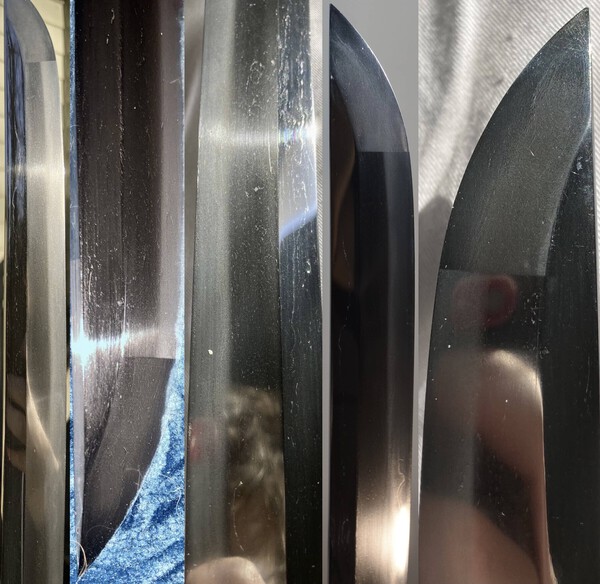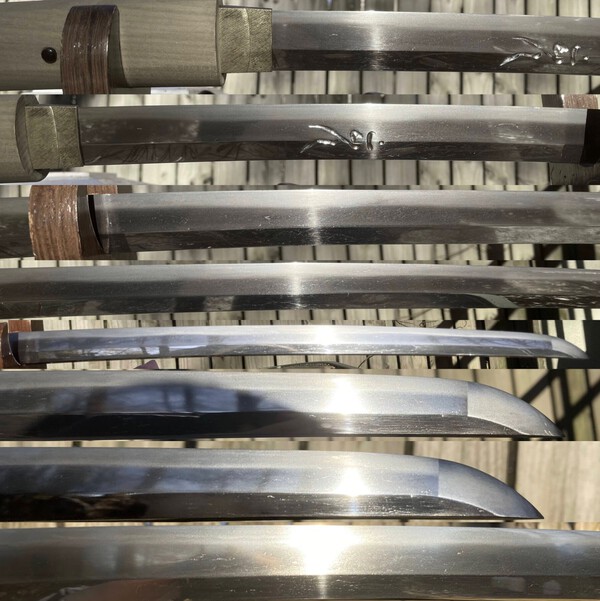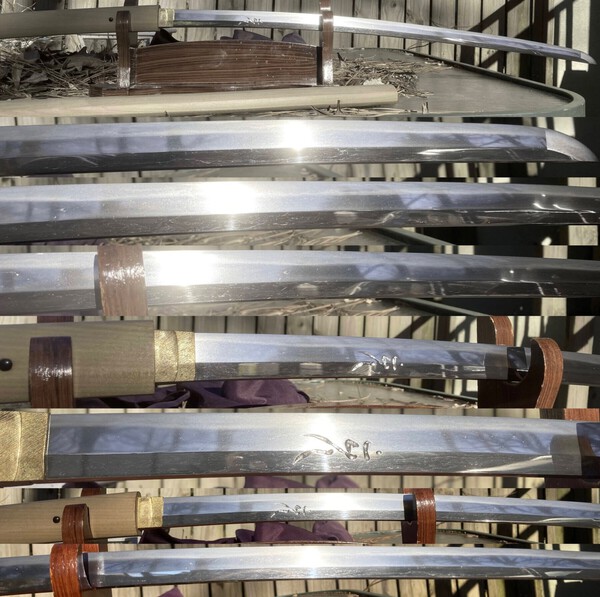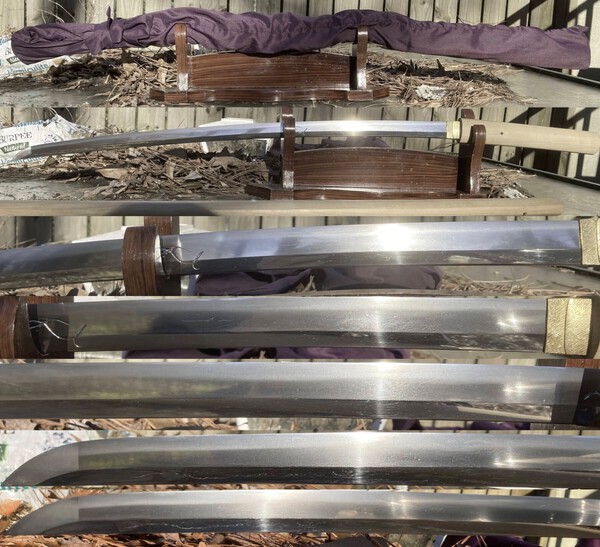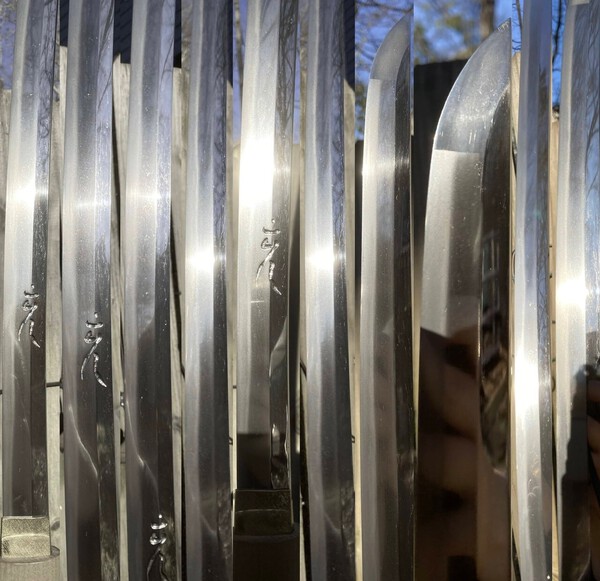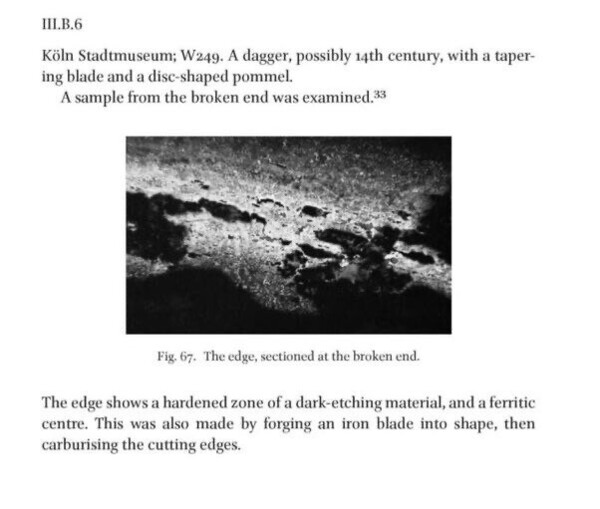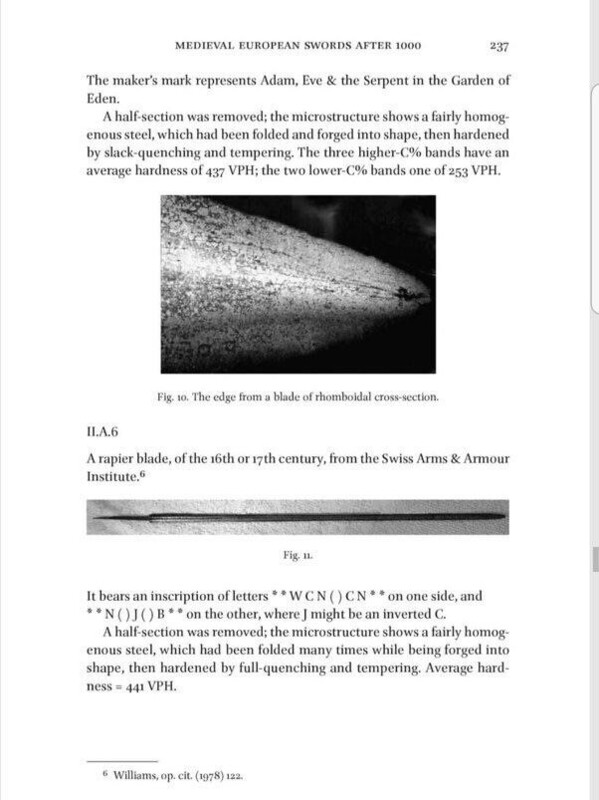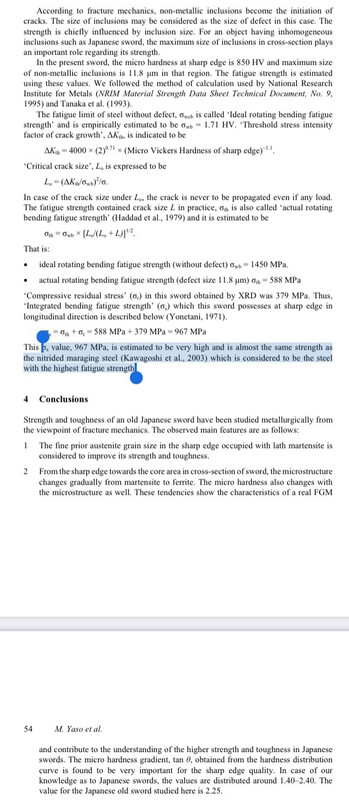-
Posts
253 -
Joined
-
Last visited
-
Days Won
1
Content Type
Profiles
Forums
Events
Store
Downloads
Gallery
Everything posted by AntiquarianCat
-
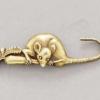
WW2 Japanese Officers sword
AntiquarianCat replied to Swords's topic in General Nihonto Related Discussion
I’m almost certain it is a showato. Note the gunome with dark peaks in the photo? That’s textbook showato. Maybe the seki or showa stamp was worn off by abrasion or is covered by rust. This is a superb diagram by Vajo on gunto and gendai spotting. Hope it helps you. And yes, I’ve seen likely showato with torokusho as of late also https://www.ebay.com/itm/255762059778?mkcid=16&mkevt=1&mkrid=711-127632-2357-0&ssspo=49Bx4St3R-6&sssrc=2349624&ssuid=QlxdlTcnSti&var=&widget_ver=artemis&media=COPY On some level I’m glad gunto aren’t at risk of destruction but that means a lot of people could get showato thinking it’s gendai and overpay. -

Are organizations obsolete
AntiquarianCat replied to Peter Bleed's topic in General Nihonto Related Discussion
Elitism and technocracy are arguably not the same as you can have wealthy and powerful without competence and competence without wealth - Kiyomaro comes to mind. That is why I find it a strange term to chose. Indeed but we are talking about analysis aren’t we? And so yes I will gladly read what the experts say and try to think of why they came to their conclusions. I will take an old sword that was once sent as sankin kotai gift as Masmune with a grain of salt if the experts have since given a thumbs down. I completely agree with respect, with trying to understand the culture that made an artifact, and maybe seeing what made it superficially and socially pass as a masmune, I just won’t think it one… -

Are organizations obsolete
AntiquarianCat replied to Peter Bleed's topic in General Nihonto Related Discussion
That sounds more like technocratic: if you mean deferring to specialists and their data/judgment. Which makes sense, follow the facts and the people trained to collect and interpret. But there is also a kind of inappropriate appeal to authority: "wealth, power, notability" are not a proxy for expertise or having data and many times I’ve seen people make the mistake of trusting a celebrity or business magnate on something unconnected to their field. Someone might be an entertaining celebrity or fashionable executive but they might not know a thing about how vaccines work. Trusting a shinsa seems like the good kind of deferring to experts: they have a lifetime of looking at data and analyzing while I don’t so sure, while I try to study and get better it’s important I get my guesses checked by experts. On the other hand I won’t be taking surgery from a tech ceo or tv commentator. -

help with sword evaluation
AntiquarianCat replied to Ankh's topic in General Nihonto Related Discussion
It’s nice looking, I see a fine hada and a konie hamon. If you want people to try and kantei it to a time and tradition it might be a good idea to upload additional photos. The most valuable additional photos are: An overhead view of the sword from both sides, a photo of the kisaki, a photo of the nakago, a photo showing off the hamon and hada. Your photos look good so just take some of them with focused directional lighting (sun or lamp, I’ve found those good for Illuminating hamon) and some with shaded outdoors lighting. The photos I’ve attached hopefully show what I mean. -

What Did I Just Buy?
AntiquarianCat replied to hddennis's topic in General Nihonto Related Discussion
I agree with the Longquan location: It’s a dead ringer for one I grabbed to tinker with so I wouldn’t risk my nihonto. It came with an acid “polish”. I’m certain this one also had its hamon “enhanced” by ferric chloride. That’s why it’s so flat and bright, almost painted on. Your fittings are nice looking though. The tsuba might be cast though. wrought iron tsuba will have luster and sharp details and changes in elevation. Cast will look dull and often have a grainy kind of look and lack sudden sharp elevation changes. The attached tsuba is an example of what I mean. If you hold your tsuba against directional light the less worn areas should have a kind of luster akin to the satin luster of old hammer struck coins. -

Recent listing on Ebay,...thoughts?
AntiquarianCat replied to Z-Man's topic in General Nihonto Related Discussion
A heuristic for acid “polishing” is: the Jigane has become unnaturally black, the hada has become weirdly coarse with all the grain opening up, the hamon has become oddly flat and bright whereas a normal hamon is subtle when light isn’t shining and dynamically bright when illuminated. Often acid polishers will be total amateurs like the ebayer who’s account name ends with 22, they can’t polish at all and use ferric chloride to make details visible. I’ve also heard some Japanese dealers take swords with mediocre polishes and give them Ferric chloride baths to make the details look flashier to new collectors. Ferric chloride is still really bad for a sword’s health, etches the surface, and leaves the sword primed for untreatable deep rust -
With all due respect, I wouldn’t wager my money in a game where I lack enough information to win, god knows I don’t have enough of it. I don’t see information as an all or nothing thing, small scale studies (or even uncontrolled accidents findings) can still uncover an effect if the difference is so powerful that you can resolve it with a small number. That’s how we go from happy incidental findings, tentatively replicated with low n and then convince the NIH/Sponsors to help fund a bigger much more credible test. Preliminary data is very useful for convincing and getting better things, even with science. And by the way if the effect is strong enough what you’ve found with small numbers of mice should replicate with huge numbers of mice unless you had serious errors in method. So yes, I would wager on my small n experiments replicating as I repeat them (or god help me if they don’t!). Your points have been very compelling and I will remember them. I still share Apercus‘ view in thinking the best answer is “we don’t know”. I don’t know how much better an expert artisan’s baseline is than the one example he experimented on if it is not the baseline itself, and unless he gave you some engineering calculations or empiric data it could be argued we don’t really know. In short, I plead ignorance.
-
I admit my field probably does affect my views. It's not hard to run into something poorly understood which forces you to play with a black box where you adjust variables and look for results and then form ideas based on them. And even though we have made huge progress in defining how living things work, stuff predicted with a model will often fail to pan out in a trial because unaccounted variables. As you noted there is a zoo of variables concerning a blade ranging from the heat treatment to shape. I don't think it unreasonable to say a work a smith made artisanally will have a lot more unaccounted variables than an aircraft you might have designed - which was made by automated manufacturing down to a micron- so while stuff made through engineering might be modeled well with a formula, it doesn't seem unreasonable to think artisan designed stuff no matter how gifted is more a black box than excel box. I'm not saying anything for or against, I'm just saying I don't think there is enough information to say with certainty. I'm sorry about mentioning the production swords without context, they seem like a good demonstration of how variables like heat treatment affect what comes out of the box and that's the only reason they're relevant. Well Clark is a smith and it seems to be customary for smiths to do destructive testing. Other smiths that are lauded will often do destructive testing, the modern ones documenting, ergo I expected he would do what the modal lauded smith does since he is one. Also, business wise it makes little sense to do destructive testing with what is supposed to be your most flawed work and post videos of it all over the net. It could mislead people into thinking that is the level of performance you offer. It's not so much as be inclined to destroy your work as a would you do crash testing with your car you designed and post videos to convince me it's superbly safe? If you can show, even if the test is flawed, business wise it seems worth sacrificing one of your works as impressionable people like me will be swayed. I don't think we know with certainty or mathematical precision how an artisanal product works, we have a video of it on the net and that might be the only empiric information we have. So it seems reasonable to me that people may differ on this question. I am thinking over your compelling points and don't doubt that steel may be capable of what the math says, I just think something made old style with uncountable variables makes trying to predict harder. Systems biology -which I'm told is the wave of the future- is invaluable for predicting and finding but there is still enough uncertainty that what the computer models may not be how the test turns out. I probably won't mention this anymore since I already aired out my opinion.
-
Yes I would. I am quite surprised that a high end maker does not carry out destructive testing. That was very much the norm in the past. Surely there must be more videos or tests out there to show off performance? How can we know a test with great but unremarkable results sets a low water mark? For anything? Without any more information it could be the upper bound. It just seems a major assumption to say every sword preforms far better than the one in the video when we acknowledge there is no evidence. Medical research, ABD, I will straight up admit the math and engineering stuff will sail over my head (why else study something light on math), but the same principles of research should hold, and if I want to prove something I'm told document and test. The steel is only one variable though, as the L6 edge rolling epidemic production swords have shows. Whatever it's theoretically capable of what we see, empirically is that Clark from the video with an excellent smith and the L6 oni with not so great. It's a range more or less consistent with other swords. Great swords and not so great swords, line always. I agree, completely. Which explains the performance variations seen. I am just saying empirically the results we have range from that Clark to the Oni. Could there be above? I'm sure there is but right now I don't think there is enough evidence to say how much and how often with certainty. Thank you by the way, very thought provoking discussion. I will think about your points tonight.
-
I hope I didn’t imply otherwise! I can certainly see the great advantage of industrial steel in production. Given what I’ve read about tamahagane production it seems that having good steel let’s you skip the most time consuming bottlenecks and go straight into geometry and heat treatment. If the smith’s skill is equal they can make more swords and eliminate a point of failure. That’s why if I would need a shinken I would want 1060/1095 both for cost effectiveness and because less risk of mistakes than if a company tried to recreate tamahagane. Thats why I’m a bit surprised there wasn’t a bigger effort to make high end modern steel blades during the war.
-
We do see quantified information in Yaso’s papers, in fact he found that Bizen to have comparable toughness to modern structural steels. I have not currently seen a paper on L6 and would be eager to see what they find. As for purity, well we can look at Yaso’s findings re Koto swords. The quality of the swords Japan admired certainly surprised me in terms of purity. I don’t know how they were able to do it. If the L6 sword that got hagires from iron was defective then surely is there a video of a properly made one? I would just like to see what one of his swords at their peak can do. Indeed bending resistance would be an absolute advantage of l6 but there are documented cases where l6 blades suffered severe edge damage from soft wood or even plastic jugs with the manufacturer insisting that’s normal performance and not a defect. Supposedly testers say L6 has accelerated edge wear relative to other swords they’ve used, the one from that video claims edge rolling prone, so while not bending would be a boon, it may not be the most important trait. They were able to quickly straighten Masao’s sword after gouging a helm but a sword that’s edge rolled most of its monouchi wouldn’t be back in the fight anytime soon. A new alloy as those mishaps show does not guarantee it will be superlative, heat treatment and geometry seem to have mattered more. I don’t deny the talent of modern smiths, it great that they innovate, I’m just saying there is both extensive evidence on old very aggressive torture testing, and scientific studies showing good old swords are competitive with what’s around today. I also have as of now not seen L6 studies or documentation, let alone any confirming L6 preforming beyond what historic first class works could do (bending nonwitshstanding) Pardon my ignorance but the only video in this thread has the Clark develop Hagire from hitting iron. They did the same with the Masao and it didn't develop fatal flaws until repeated hits of the same type and had previously survived other destructive testing. The limited evidence I have points to non-inferiority of Masao. That is certainly an immense advantage from an industrial standpoint. But the method of manufacture being far more efficient does not tell much about performance. It certainly is a powerful argument for why Mantetsu because the far greater efficiency of manufacture were a more reasonable way to make gunto, but doesn't mean they outpreform all good swords; just that it makes it easier and cheaper to make a good sword.
-
No disrespect to Clark or his impressive talents meant but there’s ample record of old swords being tested as strenuously https://markussesko.com/2019/08/27/destructive-sword-testing/ Note the case of how Yamaura Masao became famous and how they only finally ruined his sword after numerous strikes against an iron like Clark does. Seems to be a similar outcome as Clark’s suffered many large hagire from the same test. This is not to diminish the impressive talent of modern smiths just to note that first class smiths have been doing the same feats for centuries. Markus Sesko’s book on this is superb and worth reading for anyone curious about what records show on old swords and their impressive breaking point https://www.lulu.com/shop/markus-sesko/e-tameshigiri/ebook/product-21700689.html
-
Sadly ebay doesn’t care, my friend was supposedly given a screenshot from ebay where they say they reviewed a complaint regarding this sword and found no evidence of rule breaking/fraud. The seller is waving ebay refusing to punish him over this matter as proof of the sword being genuine. Thank you for chiming in, I’m sure he will reconsider if I show what experienced collectors think. I don’t know why but it seems the seller asking for a ton of money made him think it’s likely to be genuine.
-
So I'm genuinely sorry to take your time with what's a low quality fake, but an old friend is about to get swindled out of enough money to buy a TH on this: I tried to warn him but he thinks I'm fibbing, or not well informed enough to tell, since the seller (who I have kept anonymous) purports to have gotten it as a showa era sword from a deployment to Japan. The sale does not allow returns and he's being offered 6000$ for it. I don't want to see people new to this hobby get burnt so badly that they quit. I know it's obvious given the poor geometry, non Japanese nakago and a litany of other problems but he seems to believe the seller's promises more than the red flags. I'm hoping that if some well regarded collectors chime in he will reconsider. Thanks all, and sorry about the eye ache of a sword, I tried to compress the images so as little space as possible is wasted PS: I'm sorry if some collectors briefly saw an ancestral blade gunto with a nice boshi, I accidentally mixed photos of a sword I'm considering with the counterfeit, the problem should be rectified now.
-

Seem legit? Want to attempt to purchase my first real nihonto...
AntiquarianCat replied to Robbin's topic in Nihonto
1000$ isn’t a great deal. There are comparable swords to this you can get online for about half of that. Can’t remember off the top of my head but one like that was here. Might do better to wait and keep looking at photos of them (so you get used to what nihonto look like) and look for well priced ones. If you can get a study piece like that for around 500$, pounce but otherwise if I were you I’d wait. -

Seem legit? Want to attempt to purchase my first real nihonto...
AntiquarianCat replied to Robbin's topic in Nihonto
I think it’s worth posting yet another Darcy article https://web.archive.org/web/20201201120419/https://blog.yuhindo.com/the-humble-wakizashi/ A mumei wakizashi is going to have limited resale value, and eBay will often overprice (because the huge fees sellers are charged), so make sure you don’t pay too much. That said I found study pieces helpful, I had many books but without looking at real examples it was hard to get what was chikei and was was a scratch. If you can get something in decent polish and it’s well priced and it helps you, good. Just keep in mind a lot of study piece swords won’t resell for a lot. As for this sword, I don’t see any serious kizu, the area you circled looks like rust and hadori having come off. If I were you I would make sure I don’t over pay and I would check for flaws. In all honesty the sellers here including dealers are much safer to buy from and most give much better deals. I’ve pretty much quit eBay and done my buying here. -

Shinsa and tired blades.
AntiquarianCat replied to Paz's topic in General Nihonto Related Discussion
I hope you, and everyone else will excuse the question, but this is honestly the most relevant thread I’ve seen in years and didn’t want to gum up the forum with another “will this pass”. I’m planning to go to the shinsa and can only take a handful of swords I feel it’s important to decide on what’s worth the trouble of bringing. Would those with experience know if this sword stands any chance of getting Shinteisho? Its the sword some bubba carved but it’s otherwise in a decent old polish state, and fairly healthy. And I have a soft spot for it since it was my first longsword. Robert Benson said it was Bizen muromachi, probably pre sengoku. If it was once something nice would a shinsa tolerate the carvings, or am I better off submitting a different sword? I’ve seen ferric chloride damaged swords and other compromised swords get Shinteisho but I don’t know if a horrible bonji is a bridge too far. -

Shinsa and tired blades.
AntiquarianCat replied to Paz's topic in General Nihonto Related Discussion
I remember coming upon this Darcy article a while ago: https://web.archive.org/web/20210115170835/https://blog.yuhindo.com/dont-bother-it-has-no-boshi/ In it a sword had suffered fatal damage in the form of a lost boshi and out of respect to it otherwise having been a treasure sword was able to go as far as TH papers. Many people bought it without looking, thinking they could send it for Juyo but it never made it so they’d pass it on. It seems like how harshly a blade graded on condition is relative to the sword: a Rai Kunitoshi was given slack, but if I sent them a podunk shinto with hagire I’m sure they’d just look funny at the sword and send it back empty handed. Going by anecdotes it seems like non fatal flaws aren’t judged as harshly Someone was able to get Shinteisho for a tired Shinshinto. Japanese auction sites also have half out of polish unremarkable swords which got Shinteisho. -
@Ninja I have always found the “terrible steel” meme to be absurd. Not because it sounds crazy but because the people saying it are always guessing and a quick check of sources refutes them. Because a background in medical research I’m used to having to support every claim made with evidence so that makes guys guessing and assuming their guess is a fact seem wild. I would advice a check through google scholar: there is no evidence to support the claim nihonto had bad steel, especially for their time. In fact if you look at Yaso’s studies in metallurgic journals you can see it actually holds up surprisingly well even by modern standards https://www.researchgate.net/publication/264439179_Study_of_strength_and_toughness_in_Japanese_sword_produced_from_Tamahagane_steel_by_Tatara_process With all scientific sources contradicting the armchair I am forced to conclude he just made it up and thought it sounding plausible made it right. A guess is good enough to justify experiments. Not enough to guess a fact. “He concludes by writing that probably a kitchen knife from a Chinese butcher (or any culture with access to decent iron ore) of the same period was sharper, held the edge better, and was less brittle than most Japanese swords” One of the funnier ironies is that while HEMA reenactors without evidence have claimed medieval western swords were made of super steels, Sword and the Crucible, which referenced many studies found medieval and early modern western specimens were rife with slag inclusions, even in the edge which was something nihonto avoided. A devil’s advocate could with more credibility go “a kitchen knife from a Chinese butcher is sharper and less brittle than the medieval western specimens”. I don’t really believe that. The samples they looked at were likely not representative and many traditions like Toledo were known for excellence. But as is, there is ironically much more evidence of European swords having brittle slag rife edges than there is in Japan. In all honesty comparisons seem rather silly and too often are just people guessing. Now much more useful to me than armchairs guessing which sword is weaker than a Chinese butcher knife are studies that note parallels between Europe’s celebrated traditions and Nihonto. For instance Spain also used mild steel cores and harder edges. Perhaps convergent evolution lead to makers of working swords using that as a trick to improve toughness? https://www.researchgate.net/publication/328748284_Welding_by_Hot_Forging_of_Two_Carbon_Steels_for_the_Manufacture_of_Spanish_and_Japanese_Weapons
-
It depends how “Royal” is defined, I sadly lost the article but one of Darcy’s noted how most gifts between Daimyo or to the Shogun were old treasure swords. Hizen-to were an exception though and the Nabeshima would gift their best to other Daimyo, even the Tokugawa. Don’t have the Darcy story right now but this mentions that as well https://nihontoantiques.com/project/hizen-masatsugu-daito-fss-882/ Not sure if that counts as royals but Jesuit and other old European records refer to Daimyo as “princes” or their lands as duchies so by European reckoning they do.
-
I wonder if Showa Japan followed some version of that logic. All the gunto I’ve seen either had gendai or mumei shinto/shinshinto blades. Perhaps they intentionally kept their treasure swords at home? Or maybe I just have selection bias since I’ve only seen blades that belonged to junior officers and those being Heimin and low ranking samurai ancestry for the most part wouldn’t have treasure swords.
-

Mumei tanto in odd mounts
AntiquarianCat replied to Pitt1999's topic in General Nihonto Related Discussion
I remember looking at him, I don’t trust the naked blades he sells but I agree many of the swords in not rough condition he sells are nihonto with some problem - this being one of them. So I guess I’m not surprised something with an adulterated nakago got sold by him. I’m glad this sword went to someone who will care for it. It’s still a Japanese sword and a piece of history so it deserves that much. -

Mumei tanto in odd mounts
AntiquarianCat replied to Pitt1999's topic in General Nihonto Related Discussion
I had thought about dah too since there are many from the time when Thai were under Japan’s sphere of influence that are very nihonto like https://to-ken.uk/onewebmedia/Real Life Kantei swords 15 Cunha 11 12 2017.pdf but maybe this doesn’t look that much like the example. Is there any chance the sword could be tied to Kaifu? The fat mihaba and shape makes me think of that. It’s a shame the nakago has been adulterated? Would this be a Komonojo sword? It reminds me of one of his sales. -
I’ve also added Kantei Reference Book - Hamon & Boshi, Shinshinto-shi and koto Kantei by Markus Sesko. Ebook versions of course since less book wear, trees felled, and they’re well priced. I’ve also got Fuller and Gregory and want a copy of Swords of Imperial Japan , 1868 - 1945 when I can find it cheaply priced since I’ve been collecting gunto or guntofide swords as of late.


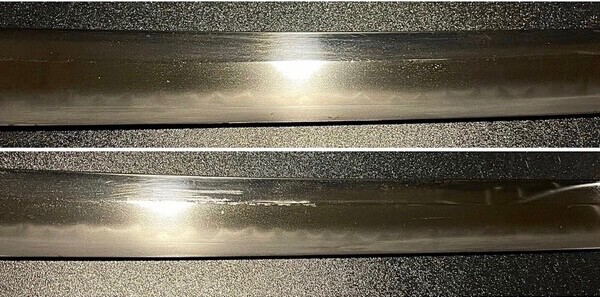
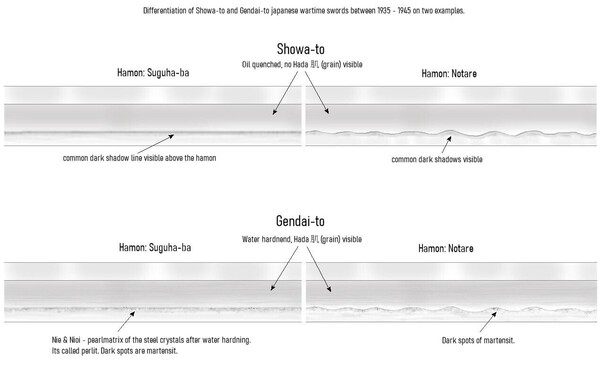
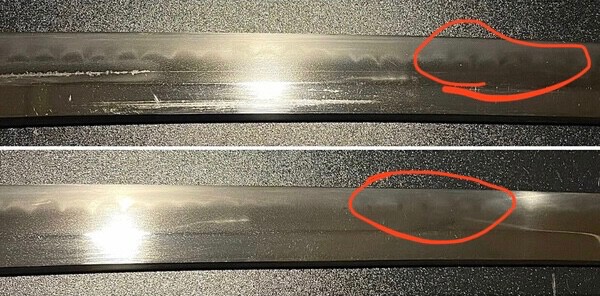


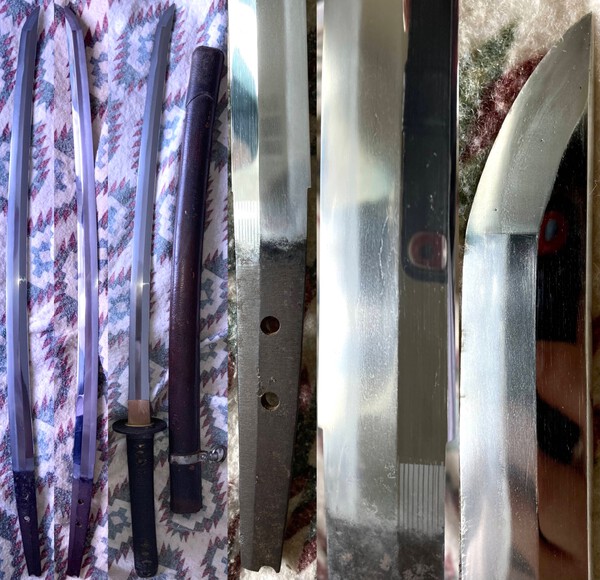
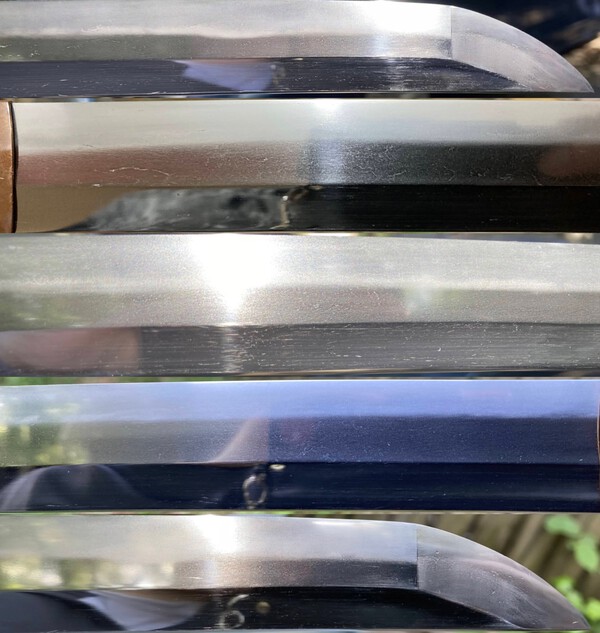

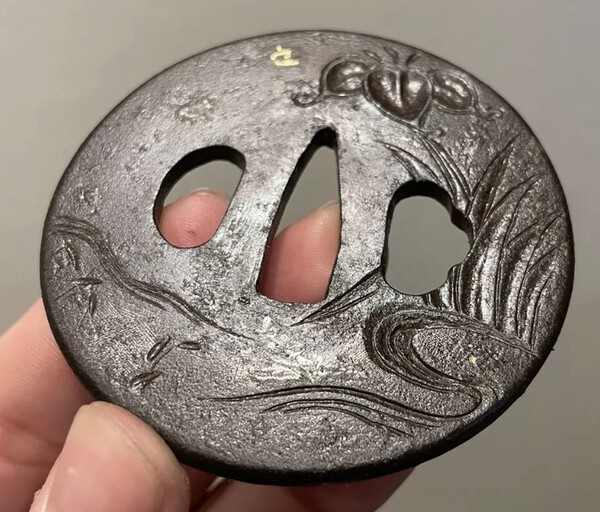


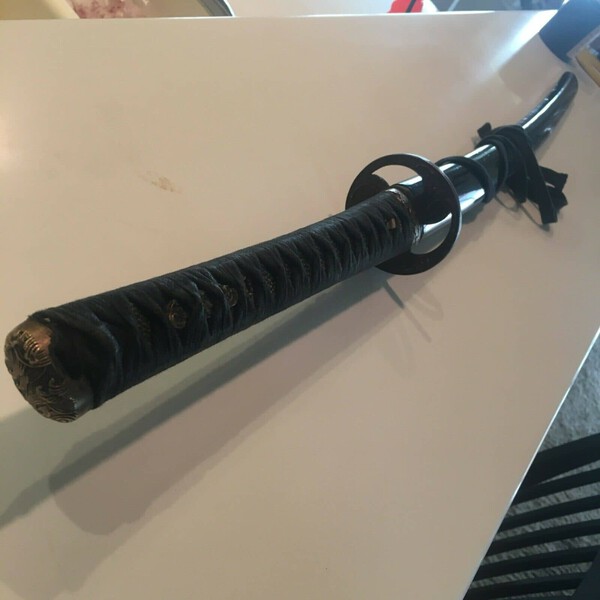
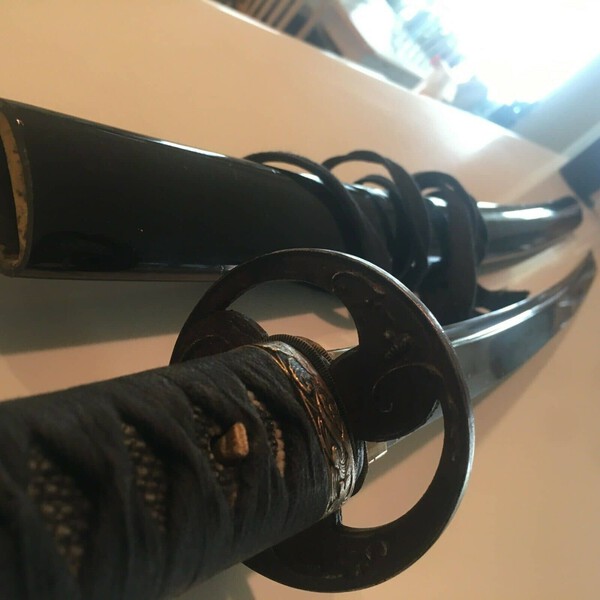
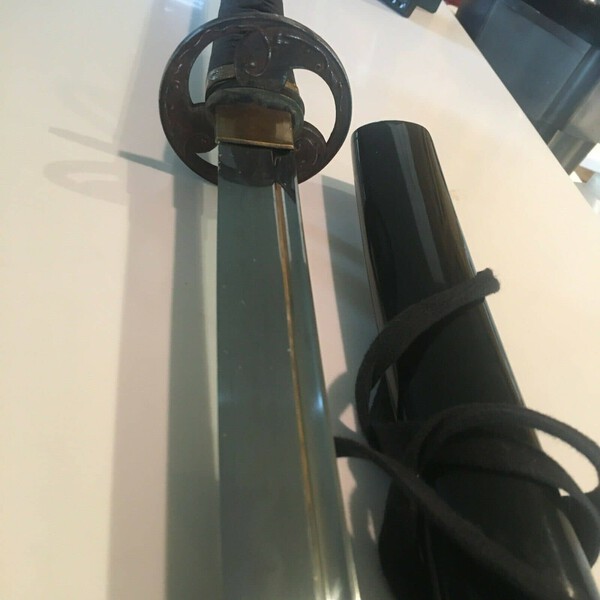
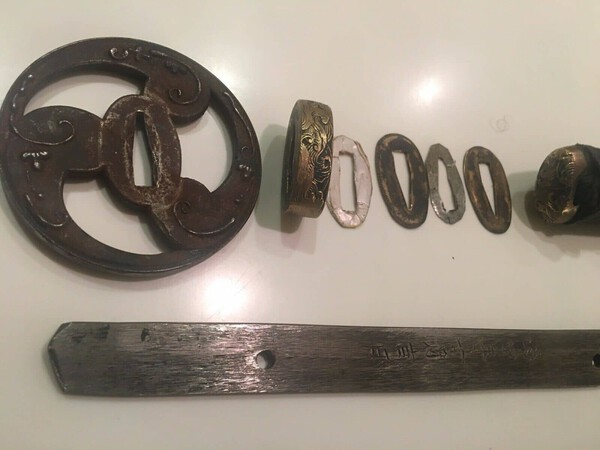
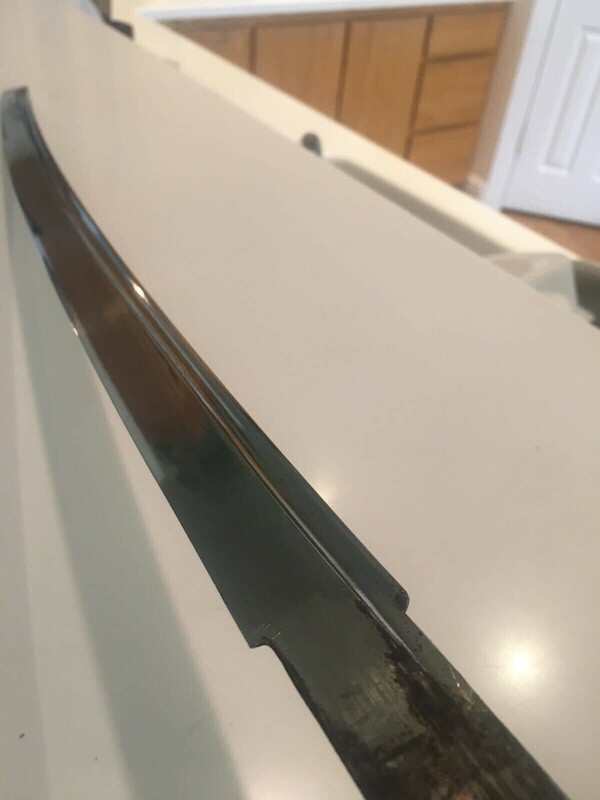


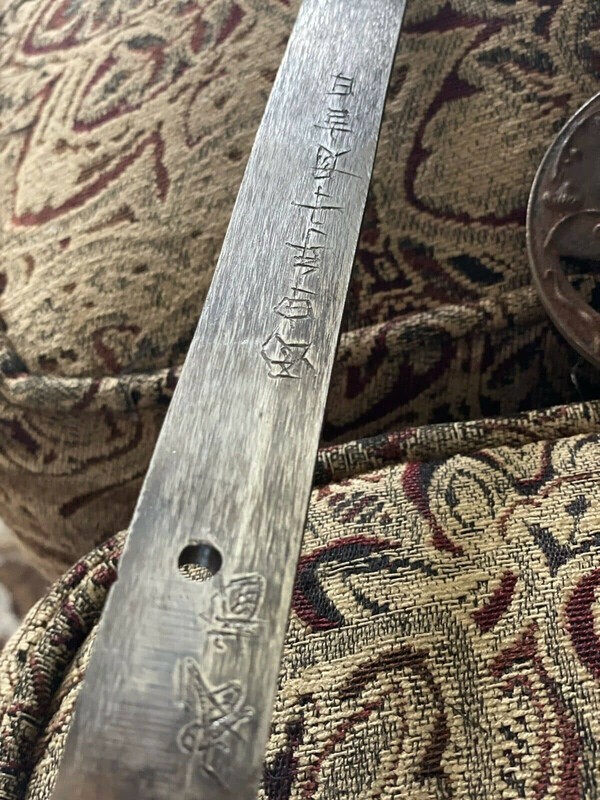
.thumb.jpg.d36fd72adba7379fbf01dbb2db3408b3.jpg)
.thumb.jpg.864c287159e1e5f3e201ba4fe161c636.jpg)
